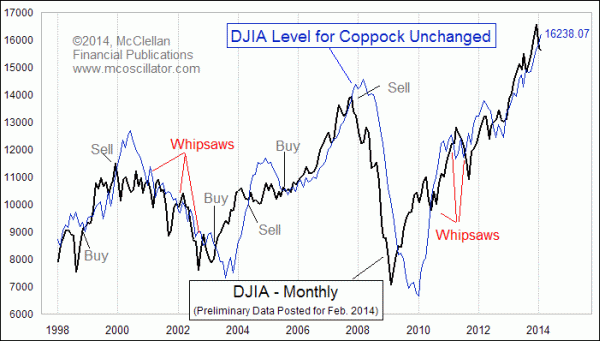Over the last year, investors have been lulled to sleep wrapped in the warmth of complacency as the Federal Reserve stoked the fires of the market with $85 billion a month in liquidity injections. I have written many times in the past that investors were likely to be rudely awakened by an unexpected event of which was likely not even on the majority of mainstream analysts radars. That occurred this past week as a revulsion in emerging markets sent the "carry trade" running in reverse. As I quoted this past week in "Putting The Market Mayhem Into Perspective":
"Hedge funds have been borrowing money in Japan (again) at very low Japanese interest rates, obviously denominated in yen. They then convert those yen to, say, the Brazilian real, Argentine peso, Turkish lira, etc. and buy Brazilian bonds or Turkish bonds using 10:1+ leverage. Accordingly, when such countries jacked up interest rates overnight, their bond markets collapsed. Concurrently, their currencies swooned, causing the 'hot money' investors to not only lose on their leveraged bond positions, but on the currency as well. If you are leveraged when that happens, the losses add up quickly and those positions need to be sold. So the bonds were sold, and the pesos/lira/real that were freed up from those sales had to be converted back into yen (at currency losses) to pay back the Japanese loans. And as the bonds/currencies crashed, the 'pile on' effect exaggerated the downside dive."
What we will need to ponder this weekend is whether the current correction is simply just a dip within an ongoing uptrend OR have the "bears" finally awakened from their winter hibernation?
1) Is A Bear Market Hanging Over Our Head? By Robert Lamy via Advisor Perspectives/Dshort.com
"Given the recent performance of the stock market, there is increased uncertainty among individual investors and stock market brokers about the prolongation of the actual bull market into its sixth year. Many of them are asking themselves if the declines over the past thirteen business days is the signal of the near end of the fifth longest bull market since WW II and the beginning of a new long bear market. A very plausible answer to their interrogations is no. The stock market cycle model predicts that the current bull market will extend through March."

2) Coppock Curve Turns Down by Tom McClellan via PragCap
"A classic technical indicator gave a rare bearish signal for the DJIA with the down move seen in January. The Coppock Curve has turned down. More importantly, it has done so after a second big top, which seems to be the important set of dance steps to mark a major market top."
3) Retail Panic? via Zero Hedge
I have written many times over the last year that interest rates would rise ONLY as long as complacency ruled investors behavior. However, with real economic growth remaining extremely weak as deflationary pressures continue to rise, it is only a function of time until investors seek the safety of bonds over risk. We are now seeing this occur.
"Last week it was the largest equity outflow in over two years. This week, following the Monday drubbing which had the temerity to push the S&P to an "unprecedented" 5% from its all time highs, the timid retail investor said enough, and ran for the hills resulting in the largest equity outflow. Ever.
According to Bank of America, aAfter a 5% loss on the S&P 500 over the last two weeks (through February 5) equity funds reported the largest weekly outflow on record. Outflows from equity funds accelerated to $27.95bn this week from a $12.02bn outflow last week, again led by ETFs." Sure enough, what goes out (here), must come in (somewhere over there), which is why at the same time all fixed income funds reported a record $14.09bn inflow. "Mutual fund investors were clearly seeking the safety of bonds, as three quarters ($11.05bn) of the total net bond fund inflow went into government funds and another $3.48bn into high grade." The great unrotation has officially begun, and unless the downward momentum in stocks is halted (think USD/SPY upward momentum ignition), the party may be coming to an end."
4) 4 Numbers About The Correction by Michael Santoli
"Having entered the year riding an excess of certainty about the steadiness of global economic growth, strength of the corporate sector, attractiveness of stocks over bonds, and scripted predictability of central-bank policies, investors have been greeted with upended expectations on most of these fronts.
None of these notions have been decisively refuted. But capital spilling from emerging markets, staticky messages on the pace of global growth and concerns about the duration of developed-world central bank generosity have been just enough to thwart risk-seeking. Recently yields on safe, under-owned U.S. Treasury notes were sent to a multi-week low of 2.6%.
Now, as the crowd tries to come to terms with a 5.8% drop in the Standard & Poor’s 500 index over the first 22 trading days of 2014, many seek the “key number” to handicap whether this is a mere frightful pullback that resets investor expectations — or something worse.
This is always tricky, because the onset of a “correction” of any depth is hard to distinguish from the opening phases of a more damaging bear market."
5) US Stocks May Unravel Quickly via Bloomberg
Tom DeMark, the chief executive officer of DeMark Analytics LLC, said in an interview on CNBC that U.S. stocks have reached an “inflection point” that resembles the period prior to the 1929 stock-market crash.
Chart Of The Day - Putting Stock Market Correction Into Perspective
With our intermediate term sell signal now issued, it could likely mean that next week will prove to be interesting.



